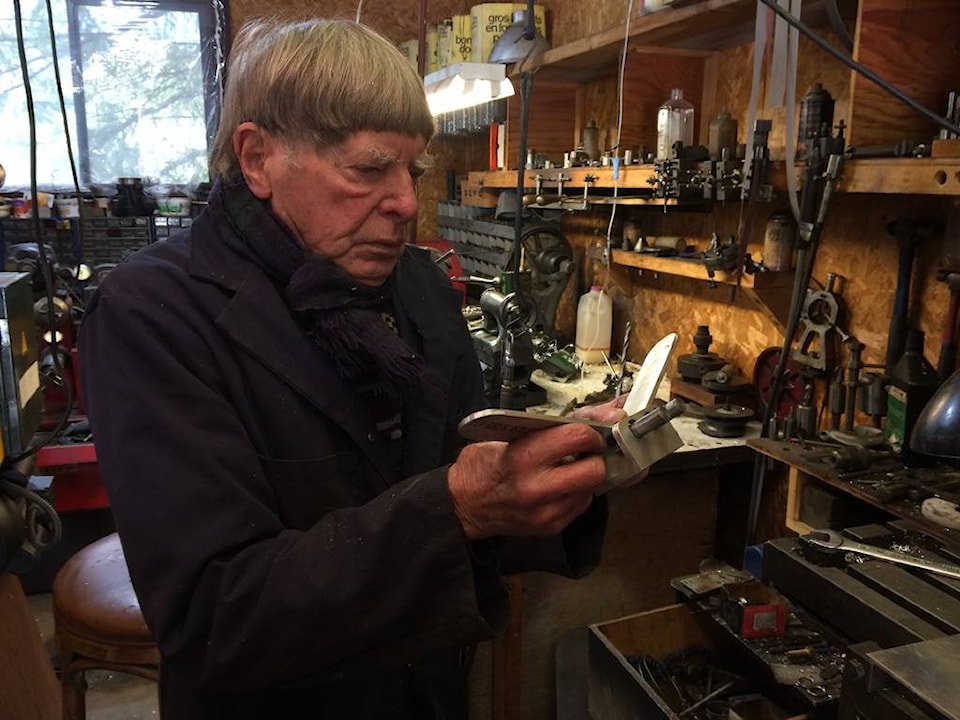A former Stettler resident has put his years as an accomplished machinist to excellent use in helping to develop a prototype ventilator - something that could be in soaring demand in the weeks to come with the COVID-19 pandemic.
Peter Brockley, who now lives in Glade which is located in the West Kootenays, was a machine shop teacher at William E. Hay Secondary Campus for 30 years.
Brockley’s son, Dr. Graham Brockley, said there is potentially a huge shortage of ventilators in Canada.
“In this country, at last count, there were 5,000 ventilators,” said Graham, who has a practice in Duncan on Vancouver Island. “We certainly need many multiples of that if this thing peaks as badly as it could.”
To that end, he said his dad is such a natural when it comes to creating all kinds of things.
“I grew up with that mentality - the tendency was that if you had to get something done, you just did it yourself; if you needed something, you made it yourself,” he explained of his father’s exceptional gift to ‘think outside the box’.
“He is just that kind of guy.”
A ventilator is described as a machine designed to provide mechanical ventilation by moving air into and out of the lungs, to deliver breaths to a patient who is unable to breathe, or who is breathing insufficiently.
Currently, countries around the world are in short supply of the equipment as doctors battle the spreading coronavirus.
They are also, unfortunately, tremendously expensive to produce.
That is, unless the new, simpler prototype that Peter has helped to develop goes into production.
“Getting ramped up to produce ventilators is quite a big thing so I started looking around to see if there were any simpler ways of doing it,” said Graham, who had found plans years back about constructing a low-cost ventilator that could be made with a couple hundred dollars’ worth of material.
“I looked at that, sent it to my Dad and said, hey, do you think you could make this?’
Peter was confident that he could.
“I talked to a few people, and one of my friends, Dr. Matthew Toom, is another doctor who works in the same emergency room that I do. His dad, Paul, is an engineer. He said, ‘My Dad is really interested in this’.
“His dad drew up plans, and he contacted me. I hooked him up with my Dad who basically took (the plans) and built it,” he explained. “So now, they’ve got their prototype done - it’s in Canada Post now on special delivery coming back out here,” he said. “It took my Dad four days to build it.
“It doesn’t surprise me - he’s brilliant. He’s always been brilliant with his hands.”
Peter is also 87, but that hasn’t slowed him down one bit nor has it affected his astounding creativity. “I’m pretty proud of my Dad. And the point really is that every ventilator could potentially save a life.”
For his part, Peter, who is originally from Wales, said the whole project was and is very much a collaboration.
“It’s not my invention,” he noted, crediting the gentleman on the coast. “He’s doing the computer stuff, I’m doing the mechanical stuff,” he said. “He’s doing the software and I’m doing the hardware.”
“As my son mentioned, they are running out of ventilators. Someone needs to step up and make some - and they’ve got to be cheaper then tens of thousands of dollars each.
”So they designed it, and then asked if there was anyone out there that can machine all of these pieces? My son said, ‘Well, my dad can do that! That’s how it started.
“I got the drawings from Paul in Tsawwassen and he sent a bunch of materials. I also picked up some materials here, and got the pieces made and shipped off.” Now the process of approvals and potential production comes into play.
Prior to teaching in Stettler, Peter worked as an oilfield machinist in Edmonton.
“They wanted vocational teachers so I moved into that in Edmonton for a couple of years, and then moved to Stettler.”
The family moved to B.C. 20 years ago.
During the family’s years in Stettler, Peter’s late wife, Noeline, privately taught music in town, and she also led the choir at the Stettler United Church, said Graham. “She also started the Stettler Gilbert & Sullivan Society,” he said.
“They were pretty instrumental in getting the theatre built at the high school as well.”
